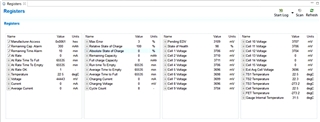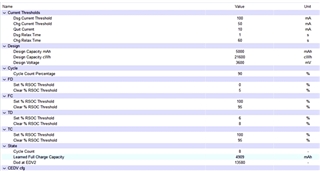Other Parts Discussed in Thread: BQSTUDIO
Hello,
I have a few battery packs returned from the field With the RSOC set at 100% and ASOC set at 0% at the same time.
Some of the packs described above have a valid FCC of ~4900 mAh, some show FCC of 0 mAh. In all cases the design capacity and the learned capacity in the Data Flash are as expected: 5000 mAh, ~4900 mAh respectively.
What might cause this to occur?
Thanks,
Spencer




